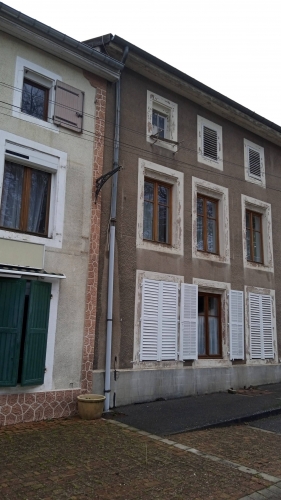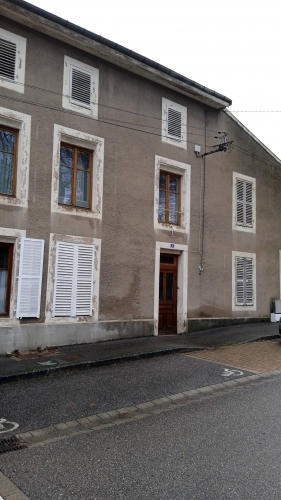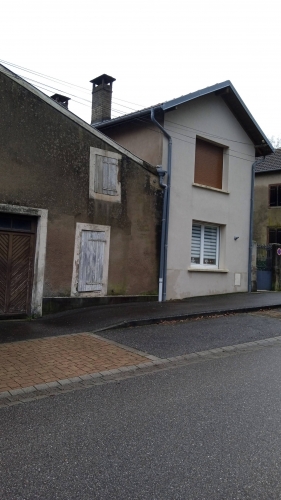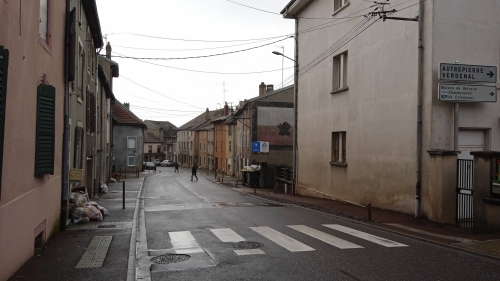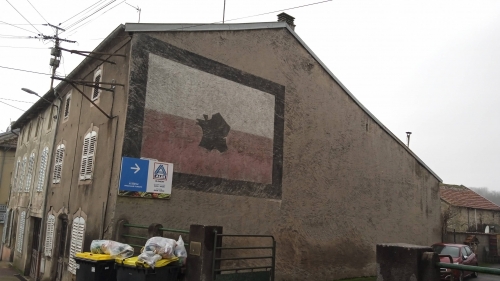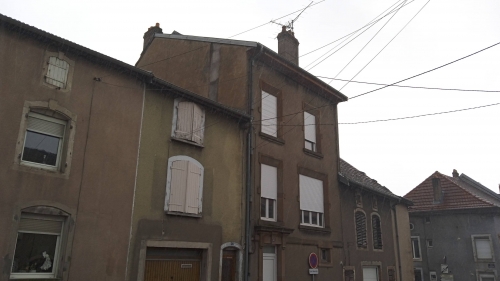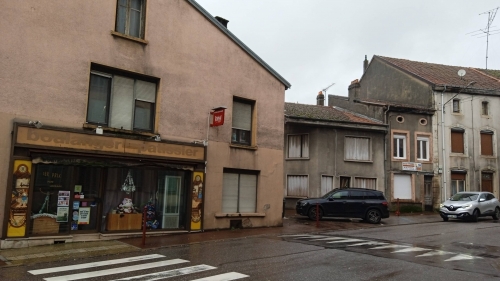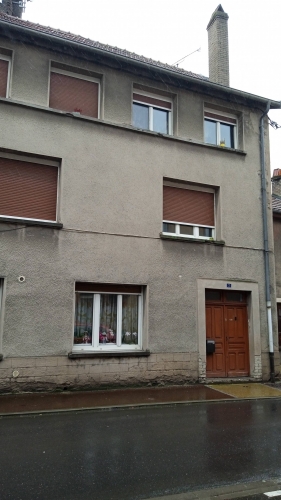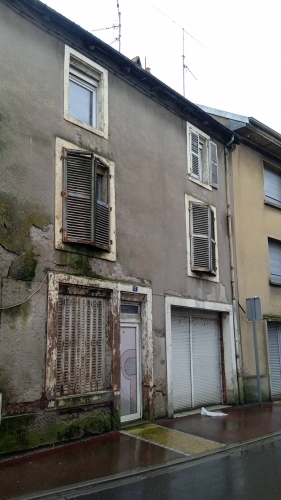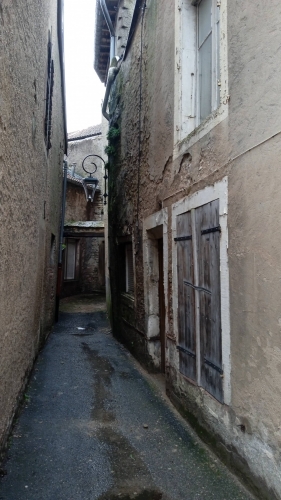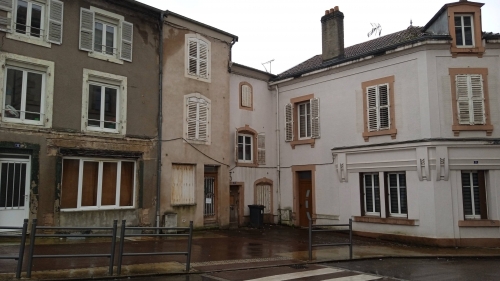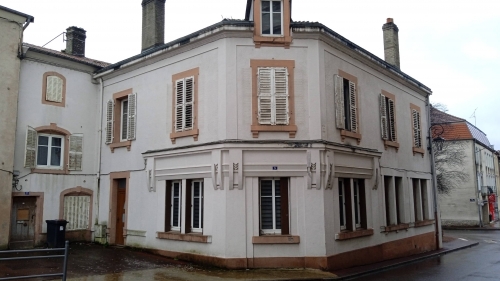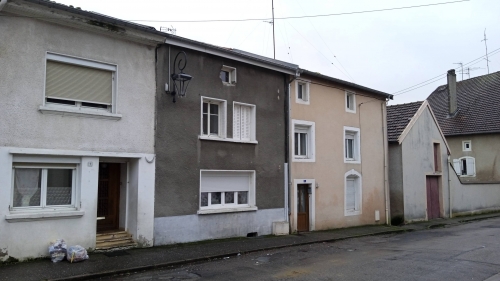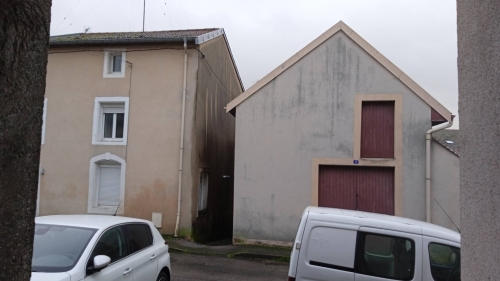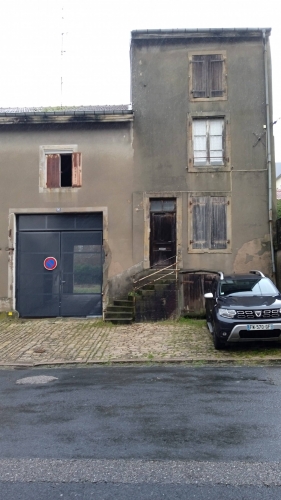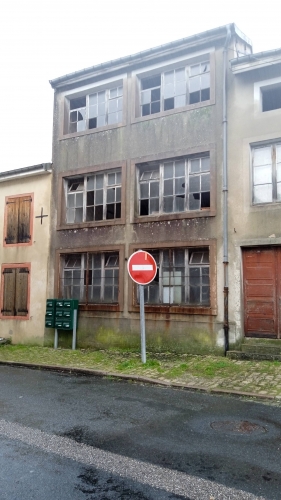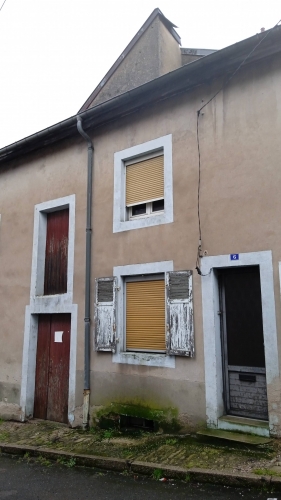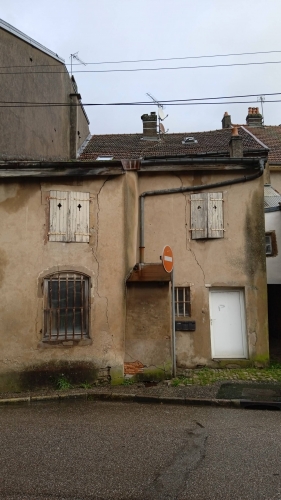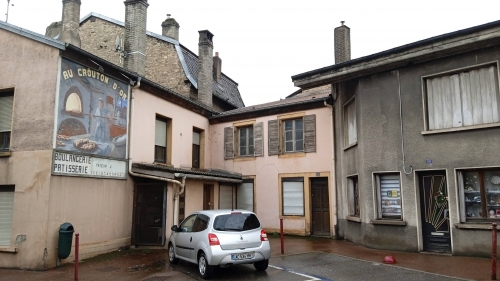These photos were used as illustrations for a small booklet published by other comrades from the Eastern Psychogeographic Collective, recounting their own vision of the exploration of Blâmont – their collective exploration took place on a different day, without a camera. It should be somewhere on the internet.
These greyish, poor, old-fashioned houses remind me of Méry-sur-Seine, which I visited with a friend a few years ago, near Troyes. The same could be said of Saint-Mihiel, in the Meuse. This color of plaster is almost the reason this blog exists. It evokes in me – although I didn’t grow up in that kind of setting at all – ancestral memories, as if the memory of my ancestors’ abject poverty in the 19th century had somehow passed into my blood.
Hardly anyone in the streets, on a weekday morning. The few passersby heading to the only open bakery are the only Blâmont residents I’ll come across – apart from the only bar’s customers.
For how many decades has this wall borne that painted hexagon? The entire town seems frozen in time. Accustomed to living in cities that have invested heavily over the years to modernize, refresh, and adapt to economic, touristic, and ecological demands, wandering through Blâmont feels like traveling back in time.
The typical kind of bakery I find myself entering before heading to high school, in those repetitive, dreary dreams that remain incomprehensible after all these years; old-fashioned shops with yellowish lighting, mere passageways no one really pays attention to, where no one talks to anyone, where you walk in still half-asleep – if not simply dulled by the weariness of facing yet another identical day. These passageway places – bakeries, downtown supermarkets, buses, building lobbies and corridors – are taking up more and more space in my mental landscape, though I can't quite say why. Perhaps because they are real life, the actual places where it unfolds, and reality always ends up demanding a place of its own.
These grey shutters take me back to Nancy. Metal, rust, rain – the basic ingredients of my twenties. Growing up, learning about life in an environment marked by age, decay, and the visible passage of time – but also by the beauty of what has passed – is an experience that shapes people in a fundamentally different way than being born and raised in a Ikea / prefab homes kind of setting, where everything is replaced every five years according to trends and the latest clever piece of furniture or gadget to acquire. Those residential neighborhoods with brand-new, shiny houses, where everything looks like it just came out of the factory, frighten and depress me more than any desolation found in a decaying industrial town.
A nearly medieval alleyway with scabrous walls. A vampire movie set – if not for the PVC roller shutters.
There’s something comforting, something familiar, in these houses that seem to huddle against one another; people live packed together, close together, keeping each other warm.
Everything is quiet here because everything is over. Which means one can finally begin to live.
Nothing moves, nothing is noisy, nothing bubbles – except perhaps the inner thought, made sharper by the absence of distraction.
Small houses to live small lives. A fantasy of simplicity, anonymity, and silence.
